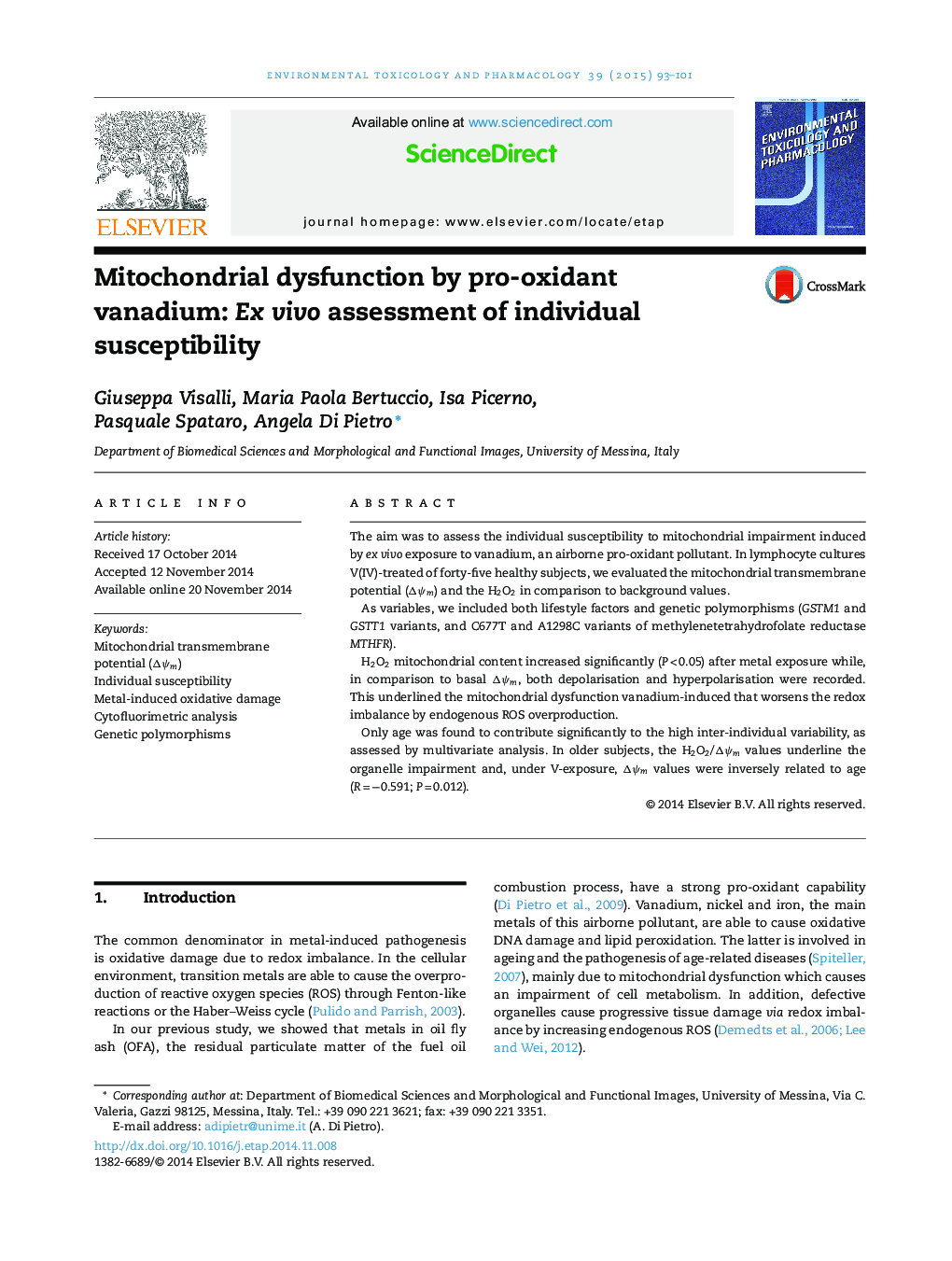| Article ID | Journal | Published Year | Pages | File Type |
|---|---|---|---|---|
| 2583270 | Environmental Toxicology and Pharmacology | 2015 | 9 Pages |
•H2O2 mitochondrial content of lymphocytes increased (P < 0.05) after metal exposure.•In comparison to basal Δψm, both depolarisation and hyperpolarisation were recorded.•Mitochondrial dysfunction V-induced worsens the redox imbalance by ROS production.•In older subjects the H2O2/Δψm values underline the organelle impairment.•Mitochondrial transmembrane potential (Δψm) was inversely related to age.
The aim was to assess the individual susceptibility to mitochondrial impairment induced by ex vivo exposure to vanadium, an airborne pro-oxidant pollutant. In lymphocyte cultures V(IV)-treated of forty-five healthy subjects, we evaluated the mitochondrial transmembrane potential (Δψm) and the H2O2 in comparison to background values.As variables, we included both lifestyle factors and genetic polymorphisms (GSTM1 and GSTT1 variants, and C677T and A1298C variants of methylenetetrahydrofolate reductase MTHFR).H2O2 mitochondrial content increased significantly (P < 0.05) after metal exposure while, in comparison to basal Δψm, both depolarisation and hyperpolarisation were recorded. This underlined the mitochondrial dysfunction vanadium-induced that worsens the redox imbalance by endogenous ROS overproduction.Only age was found to contribute significantly to the high inter-individual variability, as assessed by multivariate analysis. In older subjects, the H2O2/Δψm values underline the organelle impairment and, under V-exposure, Δψm values were inversely related to age (R = −0.591; P = 0.012).
